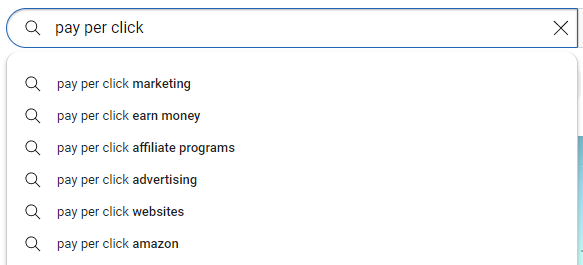
-
Cora Dixon
- 5 Min Read
- Blog, SEO, Social Media
YouTube SEO Secrets (Improve Optimisation in 2023)
In this blog, you will learn powerful YouTube SEO secrets and strategies to increase your channels’ overall performance this year.
What comes to your mind when hearing SEO? Google? Search engines? Content? That sweet #1 spot?
Anything that comes to mind is excellent, but did YouTube SEO cross your mind?
What is YouTube SEO?
To fully understand what YouTube SEO is, you need a bit of knowledge of regular SEO also. SEO is optimising things like website, content and visuals to rank higher on the search engine for specific and relevant keywords.
All social media platforms have a search engine, YouTube is no different.
The video platform offers a search feature where users can find content and channels to view.
YouTube is owned by Google, so many optimisation factors are based on Google’s algorithm determining factors – we’ll talk a little bit more about this later.
YouTube is the second most popular search engine after Google boasting more than 3 billion monthly searches, making it bigger than Bing and Yahoo!
YouTube SEO Secrets and Strategies
-
Optimising your video
Optimising your video correctly is the key to boosting your views and YouTube rankings.
What do you need to optimise? Some of the critical foundations to successfully optimising your YouTube content include Video titles, Tags, Thumbnails and Descriptions.
Let’s break them down together.
Video title
Your video title is the first impression a YouTube user will get from your video. Amongst the thumbnail, it is one of the first things someone sees when searching for content this means it can contribute significantly to your CTR.
Video title tips: 5+ words, use keywords and make it easy to understand for users.
Video description
Have you ever wondered how Google and YouTube understand what your video is about? Well, they take into account your video description.
This means you need to ensure it is optimised correctly, you can do this by including your keyword in the first 25 words, keeping the meta description short and sweet under 250 words and including your keyword around 2-4 times (think smart about where you place it).
Video tags
Video tags are an additional insight into what your content is about. Use around 10-12 tags, including your keyword, to show Google and YouTube what your content contains for them to rank it correctly.
Video thumbnail
Your thumbnail can’t necessarily be optimised with words, but it can significantly increase CTR and your ranking. To do this, create a fun, eye-catching and colourful thumbnail that includes your title. It needs to be bright and visible and give users an idea of what content they want to watch. Try incorporating thumbnails with faces.
A report found that thumbnails for popular YouTube videos were often colourful, featured real human faces or featured colour. 72% of the 740 popular videos that were investigated featured a human face.
Keyword research
Keyword research isn’t just for the written content you hope to rank on search engines, it is just as crucial in YouTube SEO. Through keywords, YouTube can assess your video’s subject, indexes and content whilst they associate it with a YouTube users search.
Research keywords with valuable search volume and intent.
Your keywords should be added to specific fields, including the title, tags and video description – you can do all of this when uploading content.
Let’s break down your first steps when conducting YouTube keyword research.

First, you can use the YouTube search engine and initiate the autocomplete feature.
When you enter a search term or word in YouTube’s search bar, it will present you with suggestions related to your search term.
Here is an example below:
Say you wanted to create a video on pay per click, type this into the search bar and see which results pop up. These are key terms regularly used on YouTube that you can incorporate into your titles, descriptions and tags.
Alternatively, you can use keyword research tools, including KeywordTool.io, where you can search a keyword or topic, select the platform you wish to find keywords for and filter the keyword lists according to your preferences and needs.
You should consider the keywords within your niche and area of speciality, not just those that rank the highest.
YouTube SEO guidelines
As mentioned earlier, YouTube and Google follow similar guidelines and best practices for SEO. This means the techniques you already use to support your SEO will be transferable here.
You should consider the guidelines you use to create your written content, like blog posts or website copy and transfer these techniques into your YouTube content.
You can study SEO guidelines for online content and apply the same techniques to your video creation.
Create a checklist that will help you stay on track, has your video got a title? Does it flow in an easy-to-understand way for viewers? Have you added links to similar content on your channel? Filled in all details during upload with keywords?
Not only will this contribute to the quality of your content, but it will also benefit your SEO efforts.
Transcriptions and videos
YouTube cannot read images or video – so that’s where text and code come in.
An SEO secret you can incorporate so YouTube can better understand your content is to create transcriptions and captions.
What’s the difference between transcription and caption?
Transcription: this is a complete transformation into the text of what the video covers. You can do this yourself or use YouTubes tool.
Caption: these are pieces of text that appear on the screen and translate what the video is saying. Although they do not contribute to SEO, captions can increase the accessibility of your content for those who are hard of hearing.
Longer content
One of our YouTube SEO tips is to create longer content.
Simply put, longer content can produce significantly higher search engine rankings, and even a lengthy title can be beneficial. Try to aim for 5+ words, including your keyword. The benefits of longer titles include more descriptions, which can increase CTR. YouTube also categorises channels that create longer content as ‘top channels’, which can contribute to your ranking factors.
Analytics
YouTube has analytics built straight into the platform, which is handy for fully getting to know your audience.
YouTube analytics offers a variety of key metrics you can use to understand better your audience lie: audience retention, watch time, demographics, traffic sources, CTR, unique viewers and more.
Access to these analytics will provide you with figures to truly understand how your content is performing – this can inform future content and build successful YouTube search engine optimisation tactics going forward. Use the information provided to better cater content to them.
Did you know all of these YouTube SEO Secrets?
Are you looking for creative ways to refresh your digital marketing strategy? Why not speak to one of our specialists today!




